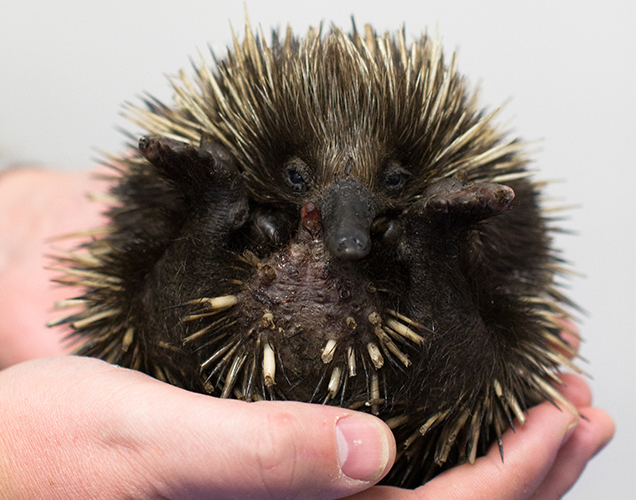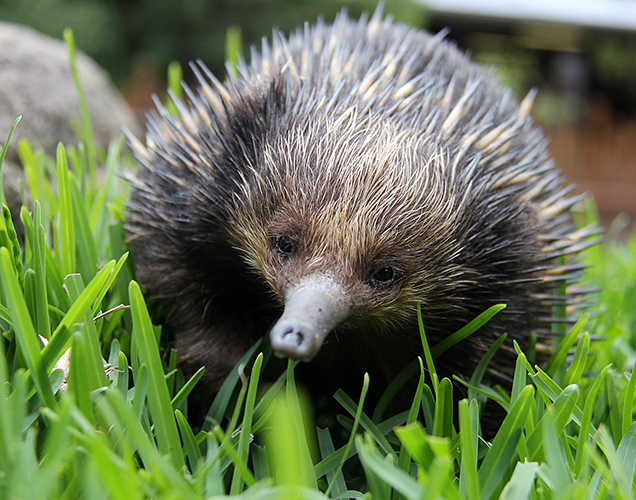Mid to late-winter, echidnas are on the move: it’s breeding season until the end of September! We are seeing more echidnas coming through our RSPCA Wildlife Hospitals right now after being hit by cars on our roads, so please keep watch for our prickly natives!
Imagine you are walking down the street, being followed by ten possible partners, before growing tired and finally accepting one as your mate?
This is one of the theories surrounding one of the more unique and mysterious mating rituals, undertaken by the iconic Australian echidna.
A mostly timid, solitary mammal, echidnas are spread throughout most of Australia, living in both semi-arid and tropical conditions, with one of the more unique and mystifying reproduction rituals that has experts bamboozled.
Travelling in trains up to ten echidnas long, the odd procedure involves a line of males following a single female, nose to tail, in a process known as ‘trailing’, leading to a female echidna choosing its mate before reproducing.
The ritual is a rare sight in nature, with echidnas being largely elusive, however the ritual has been observed a handful of times, and even captured on camera.
Experts note, that while echidna trains can contain up to 11 echidnas, and last for up to six weeks before mating occurs, it is usually more common for these lines to span three or four monotremes.
During this time, activities involve foraging, walking, and resting as a group.
Though shrouded in mystery, there are a few theories around why echidnas undertake this strange tradition.
One such idea surrounding the courtship is based off the echidna’s low rate of reproduction, with a lower number of sexually active females than males.
This theory suggests that the males court a female over a month before she is ready to mate, to ensure her fertility.
Another notion suggesting the reason for the echidna trains, is as a determinant for the dominant male.
Echidna trains are usually observed with the largest males at the front, and the smallest at the back, fuelling the theory that the dominant males are nearest to the female for when she becomes receptive.
It might also be that the female simply chooses the male which shows the most persistence!
So next time you’re looking for a partner, spare a thought for the echidna – their situation might be a little more prickly than yours!
Read more wildlife stories in RSPCA's Magazine, The Biscuit.





